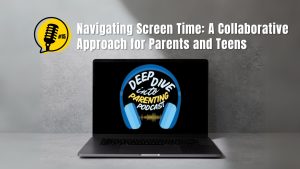"
![]() A combination of handed-down smartphones, summer break and a new wave of shadowy apps makes the next three months especially dangerous for children, warns a nationally recognized cybercop.
Understand, it’s not just pedophiles and pimps preying on children. It’s children preying on children.
Despite parental controls, says Orange County Sheriff’s Deputy Clay Cranford, children as young as 9 years old go to war with one another with tragic consequences they are too young to anticipate.
Cranford, given the 2015 National Bullying Prevention Award from the School Safety Advocacy Council, fires up his tablet and the recent case of Britney unfolds.
Britney, not her real name, was a fifth-grader in a middle-class home in South County. Mom got a new iPhone and gave her 9-year-old daughter the old phone. Secretly, Britney created an Instagram account and agreed to set one up for her best friend. But the girls had a falling out.
Britney went into her friend’s account, masquerading as the girl. “I like to pole dance,” Britney wrote.
It got worse. The online feeding frenzy was savage – from 9- and 10-year-olds.
When Cranford first saw the young victim, “she was crying, bent over, coming to pieces.”
The deputy talked to the parents and children and managed to restore order. But, he points out, there are thousands of similar incidents every day across this nation, and most remain hidden in the underground world of adolescent and teen social media.
Cranford reports scores of parents in the past few years handed off their old smartphones to their children, many in elementary school. “It’s like handing a 16-year-old the keys to a Ferrari.”
But he also says that with diligence, family time and learning about the new smartphone universe and the apps that come with mobile devices, parents can make a difference.
SECRET PHONE APPS
Lindsey, not her real name, was whiling away a summer day between sixth and seventh grade and sent her adolescent boyfriend a surprise: a photo of her naked torso.
Fortunately, her boyfriend didn’t resend the image. But he did pull out his smartphone and show the photo to friends.
Word spread. “She’s thinking her life is over,” Cranford recalls. “She’s asking, ‘How am I going to get through this?’
“I read the boy the riot act,” Cranford recalls. Because the torso had no face, technically no laws were broken. But the boy came close to facing felony distribution of child pornography.
Cranford explains that 88 percent of teens have witnessed cruelty online. He states that 18 percent of teen boys and nearly one-fourth of teen girls have sexted nude images.
“Every time I deal with kids’ problems,” the deputy says, “the Internet is involved. Parents have no idea what their kids are doing.”
Consider that in Britney’s case, the victim didn’t have her own smartphone.
Widespread access to smartphones has spiked minors’ use of social media apps. There’s Snapchat, Kik and Blink. Twitter’s Periscope offers live video streaming. BurnNote advertises “a messaging system that puts your privacy first.” Whisper calls itself “anonymous secret-sharing.”
“It’s absolutely inappropriate for anyone under 17 to have Snapchat,” Cranford declares, adding that even Snapchat agrees. The app is designed to make images disappear within 10 seconds. The deputy says that does two things: Parents can’t monitor images, and the user gets a false sense of security because other apps can record the images without the sender knowing.
We type in Kik on Cranford’s tablet. The first thing I read: “I am looking for a female slave.”
Then there are apps disguised as other apps, called “vault apps.” The deputy learned one sixth-grade boy was selling hardcore pornography for $5 a photo. He asked the boy for his smartphone and the student coolly handed over the phone.
“Why are there two calculator apps?” the deputy asked. The boy lost his cool. Both calculators worked just fine. But he eventually admitted one included a code and access to “My Secret Photos.”
“As soon as parents get a grip,” Cranford reports, “kids have already moved on to other things. They leave their parents in the dust.”
PARENTING MATTERS
A combination of handed-down smartphones, summer break and a new wave of shadowy apps makes the next three months especially dangerous for children, warns a nationally recognized cybercop.
Understand, it’s not just pedophiles and pimps preying on children. It’s children preying on children.
Despite parental controls, says Orange County Sheriff’s Deputy Clay Cranford, children as young as 9 years old go to war with one another with tragic consequences they are too young to anticipate.
Cranford, given the 2015 National Bullying Prevention Award from the School Safety Advocacy Council, fires up his tablet and the recent case of Britney unfolds.
Britney, not her real name, was a fifth-grader in a middle-class home in South County. Mom got a new iPhone and gave her 9-year-old daughter the old phone. Secretly, Britney created an Instagram account and agreed to set one up for her best friend. But the girls had a falling out.
Britney went into her friend’s account, masquerading as the girl. “I like to pole dance,” Britney wrote.
It got worse. The online feeding frenzy was savage – from 9- and 10-year-olds.
When Cranford first saw the young victim, “she was crying, bent over, coming to pieces.”
The deputy talked to the parents and children and managed to restore order. But, he points out, there are thousands of similar incidents every day across this nation, and most remain hidden in the underground world of adolescent and teen social media.
Cranford reports scores of parents in the past few years handed off their old smartphones to their children, many in elementary school. “It’s like handing a 16-year-old the keys to a Ferrari.”
But he also says that with diligence, family time and learning about the new smartphone universe and the apps that come with mobile devices, parents can make a difference.
SECRET PHONE APPS
Lindsey, not her real name, was whiling away a summer day between sixth and seventh grade and sent her adolescent boyfriend a surprise: a photo of her naked torso.
Fortunately, her boyfriend didn’t resend the image. But he did pull out his smartphone and show the photo to friends.
Word spread. “She’s thinking her life is over,” Cranford recalls. “She’s asking, ‘How am I going to get through this?’
“I read the boy the riot act,” Cranford recalls. Because the torso had no face, technically no laws were broken. But the boy came close to facing felony distribution of child pornography.
Cranford explains that 88 percent of teens have witnessed cruelty online. He states that 18 percent of teen boys and nearly one-fourth of teen girls have sexted nude images.
“Every time I deal with kids’ problems,” the deputy says, “the Internet is involved. Parents have no idea what their kids are doing.”
Consider that in Britney’s case, the victim didn’t have her own smartphone.
Widespread access to smartphones has spiked minors’ use of social media apps. There’s Snapchat, Kik and Blink. Twitter’s Periscope offers live video streaming. BurnNote advertises “a messaging system that puts your privacy first.” Whisper calls itself “anonymous secret-sharing.”
“It’s absolutely inappropriate for anyone under 17 to have Snapchat,” Cranford declares, adding that even Snapchat agrees. The app is designed to make images disappear within 10 seconds. The deputy says that does two things: Parents can’t monitor images, and the user gets a false sense of security because other apps can record the images without the sender knowing.
We type in Kik on Cranford’s tablet. The first thing I read: “I am looking for a female slave.”
Then there are apps disguised as other apps, called “vault apps.” The deputy learned one sixth-grade boy was selling hardcore pornography for $5 a photo. He asked the boy for his smartphone and the student coolly handed over the phone.
“Why are there two calculator apps?” the deputy asked. The boy lost his cool. Both calculators worked just fine. But he eventually admitted one included a code and access to “My Secret Photos.”
“As soon as parents get a grip,” Cranford reports, “kids have already moved on to other things. They leave their parents in the dust.”
PARENTING MATTERS
![]() Cranford, who has children of his own and is scheduled to address three national safety conferences in the next two months, reports, “by age 17, 78 percent of kids have seen full-on porn online.”
Complicating things is that online anonymity creates a barrier to reality. “In cyberbullying, there’s a loss of inhibition, a loss of empathy.”
Additionally, the prefrontal cortex is still developing. Instead of thoughtfully considering consequences, adolescents and teens “go with their gut, flight or fight instincts.”
The deputy explains, “It’s a horrible combination of lack of development and not having face-to-face communication.”
Cranford notes, however, that there’s hope. “A lot of this nonsense goes away in college.”
But he adds, “Unfortunately, a lot of kids get damaged before that happens.”
“I ask parents where is the safest place for your kid to be, and they say at home,” Cranford offers. The deputy reminds them, “The Internet exposes them to 2.5 billion people and they’re all in your child’s room.”
Cranford, who has an e-book on these issues coming out in a few weeks, advises no consequences for children who immediately admit mistakes. And he says to limit screen time, regardless of the device, to a few hours a day. When screen time expires, the deputy suggests swapping in a cheap prepaid flip phone.
Of the ease of plugging in children, the deputy says, “You’ve got to turn off your free baby-sitter. You have to engage your children.”
Finally, he says, the age of worrying about a child’s privacy is over. In the mobile device age, “There should be zero expectation of privacy.”
Britney would agree.
Contact the writer: dwhiting@ocregister.com
Parenting in a Digital World is written by Clayton Cranford, the nation's leading law enforcement educator on social media and online safety for children and recipient of the 2015 National Bullying Prevention Award.
This easy step-by-step guide will show parents how to create a safe environment on the Internet, social networking apps, and on their chil
Cranford, who has children of his own and is scheduled to address three national safety conferences in the next two months, reports, “by age 17, 78 percent of kids have seen full-on porn online.”
Complicating things is that online anonymity creates a barrier to reality. “In cyberbullying, there’s a loss of inhibition, a loss of empathy.”
Additionally, the prefrontal cortex is still developing. Instead of thoughtfully considering consequences, adolescents and teens “go with their gut, flight or fight instincts.”
The deputy explains, “It’s a horrible combination of lack of development and not having face-to-face communication.”
Cranford notes, however, that there’s hope. “A lot of this nonsense goes away in college.”
But he adds, “Unfortunately, a lot of kids get damaged before that happens.”
“I ask parents where is the safest place for your kid to be, and they say at home,” Cranford offers. The deputy reminds them, “The Internet exposes them to 2.5 billion people and they’re all in your child’s room.”
Cranford, who has an e-book on these issues coming out in a few weeks, advises no consequences for children who immediately admit mistakes. And he says to limit screen time, regardless of the device, to a few hours a day. When screen time expires, the deputy suggests swapping in a cheap prepaid flip phone.
Of the ease of plugging in children, the deputy says, “You’ve got to turn off your free baby-sitter. You have to engage your children.”
Finally, he says, the age of worrying about a child’s privacy is over. In the mobile device age, “There should be zero expectation of privacy.”
Britney would agree.
Contact the writer: dwhiting@ocregister.com
Parenting in a Digital World is written by Clayton Cranford, the nation's leading law enforcement educator on social media and online safety for children and recipient of the 2015 National Bullying Prevention Award.
This easy step-by-step guide will show parents how to create a safe environment on the Internet, social networking apps, and on their chil






